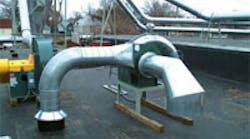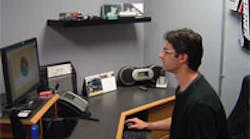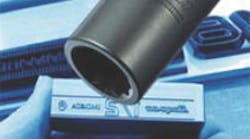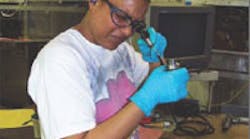By incorporating a customized Emco Maier CNC lathe, Dayton Richmond Concrete Accessories replaced two manual lathes, eliminated part handling, and streamlined its production of form ties.
Two manual lathes were no longer efficient for producing form ties at Dayton Richmond Concrete Accessories of Dayton, Ohio. Form ties, one of the company's major products, are used at the base and/or top of modular-type framework to tie steel form panels together. Through Advanced Machinery in Dayton, the shop incorporated a customized Emco Maier CNC lathe that eliminated part handling, streamlined production, and increased productivity.
"It was taking us six operations, two machine operators, and nearly 7 min to produce each form tie," says Bill Drewry, manufacturing engineer at Dayton Richmond. The production challenge was finding a machine that had the capacity to maneuver the part material in a continuous flow. The shop was hand feeding materials into the lathe spindle and manually removing finished parts, which required both time and manpower.
The customized lathe is an EmcoTurn 356 MC that features main and sub spindles with full C axes running at 24 and 17 hp. All 12 tool-turret stations are driven at 9 hp/4,000 rpm. As standard, the machine has polygon turning and rigid-tapping capabilities.
To customize the machine, Emco applied a barfeeder to automatically feed material into the machine's main spindle. It then converted the lathe's right-hand headstock into a through-spindle and attached an extension-tube system protruding outside the machine at the exit side of the right-hand headstock. Replaceable liners accommodate a variety of part diameters, and a custom canted top-table accepts finished parts as they exit the machine. Parts push each other through the exit tube, onto the table, and roll out of the way. So no time is added to the part cycle for a dedicated unload operation.
Emco Maier Corp.
Columbus, Ohio
www.emcomaier-usa.com








